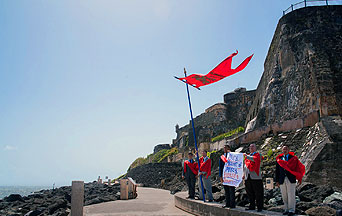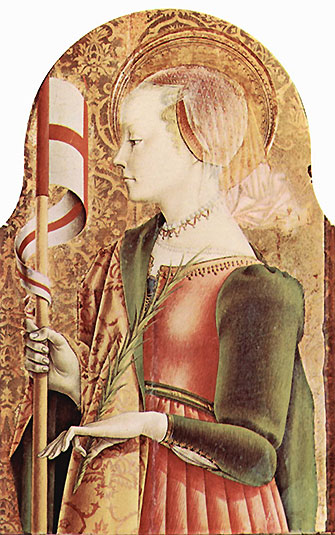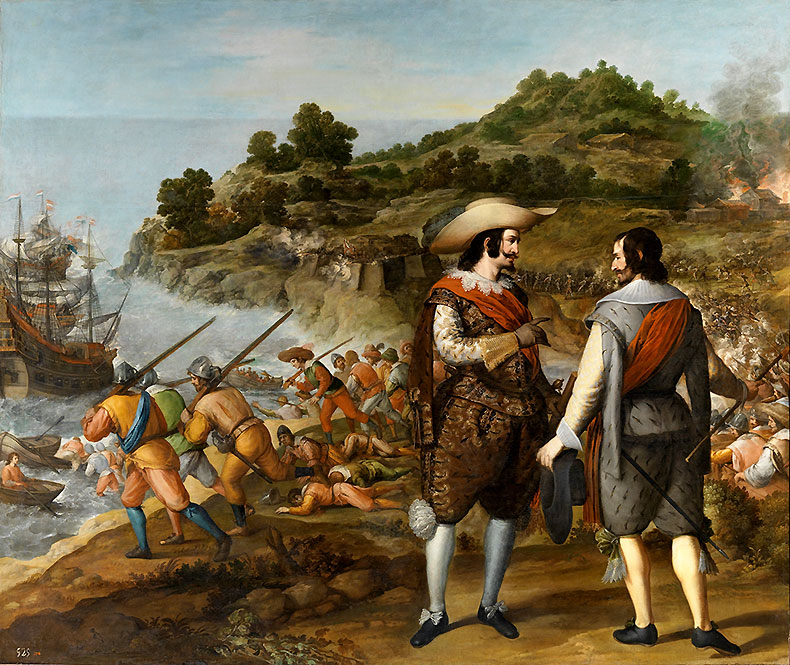
The history of America calls to mind many events. People think of the English colonization, the War for Independence, the Louisiana Purchase, the Civil War, and the World Wars. Unfortunately, a significant part of America’s earlier past remains hidden and forgotten.
The modern presentation of American history is often limited to the formation of the fifty states, which begins with the Pilgrims’ landing at Plymouth Rock. However, a real history of present American territory can be traced to America’s discovery by Christopher Columbus.
On his second voyage in 1493, Columbus discovered the Caribbean islands of Puerto Rico and the Virgin Islands. His intentions were to civilize the native tribes, convert them to Catholicism and establish Spanish colonies. He left Spain in September and arrived on November 14 off the coast of what would become known as the Virgin Islands. He named them after Saint Ursula and her 11,000 virgin handmaids who were martyred by the pagan Huns.

The History of the Virgin Islands
Columbus and his men first stepped foot on the island he named Santa Cruz, which is more commonly called St. Croix. During the short visit, his men saved two native boys who had survived the savage treatment of the feared Island Caribs Indians. This incident made it clear to the Spanish that their desire to civilize and convert these people would not be a peaceful task.
The Catholic Spirit of Christopher Columbus
Columbus was unable to found a colony due to the hostility of the Caribs, who were known for their cannibalism. After years of constant fighting off unceasing Carib attacks, the Spanish finally took all the islands in the area in 1555 and began to settle them.
Spanish control did not last very long, as following the Spanish Armada’s defeat, the English, French, and the Danes sought to control the Virgin Islands. These three nations each enlisted pirates to take the islands from the Spanish. After many sunken ships and men were killed, the English took all the islands to the east of St. John, while the Danes controlled St. John and the islands west of it. The Danish controlled the islands for about two centuries.
In the late nineteenth century, the United States began to take an interest in acquiring the Danish West Indies as a location for a naval base. The sale of the islands was negotiated in 1867 and later in 1902, but failed.
During World War I, the United States feared that if Germany invaded Denmark, Germany might use the Danish colony as a stepping stone to invade the United States. Being neutral, Denmark accepted America’s offer to buy the islands and sold them for $25 million. The military soon put bases on these newly acquired American territories.
Learn All About the Prophecies of Our Lady of Good Success About Our Times
The Case of Puerto Rico
Shortly after leaving St. Croix, Christopher Columbus landed at an island he named San Juan Bautista. The natives that inhabited this island were much more supportive. A few years later, Juan Ponce de Leon founded the first Spanish colony called Caparra. He became the first governor of the island, and his body lies in the cathedral in San Juan to this day.
Catholicism flourished in Puerto Rico, and a diocese was established in 1511. It also proved to be a stepping stone for the discovery of Florida by Juan Ponce de Leon in 1513. In 1521, the settlement of San Juan was moved to the Islet of Puerto Rico because of its strategic location and better climate. Thus, the names of the island and major settlement switched. The island became known as Puerto Rico, while the settlement took the name San Juan, which is the current capital of Puerto Rico. When Juan Ponce de Leon died, his son Luis Ponce de Leon became governor. The Ponce de Leon family governed Puerto Rico for over 250 years.
The Spanish erected many forts to defend the island from outside attacks. The largest one, Castillo San Felipe de Morro, was completed in 1589. In 1595, the fort was attacked by the Englishman Sir Francis Drake and his men. The fort held out, and the English retreated, losing eight ships and 400 men. Three years later, the English attacked again and won the close battle. However, the Earl of Cumberland abandoned the island since he did not have enough men to keep the island. Spain regained control, sent more men and rebuilt the fort in the following years.
Three Reasons the Church’s Enemies Hate the Immaculate Conception
On September 24, 1625, Danish forces led by Boudewijn Hendricksz, landed off the coast of San Juan for a month-long siege. The Spanish were pushed back into the fort while the Danish occupied the rest of the city. Hendricksz demanded the few hundred Spaniards, including women and children, to surrender the fort. If not, he would spare no one. Captain-General Juan de Haro y Sanvitores, the colony’s governor, responded, “If you deliver up to me all the ships in which you came, I will let you have one to return home.”
Unrelenting bombardments continued for weeks. Hendricksz again called for surrender, threatening to burn down San Juan. The Spanish responded that “We have enough courage and wood and stone to build again.” Hendricksz fulfilled his promise, and the capital went down in flames. When the Spanish in the fort still did not surrender, Danish forces finally abandoned their conquest on November 2. The Danish left behind over two hundred casualties while the Spanish only lost 17 men. After this siege, Spain rebuilt San Juan and sent more men to Puerto Rico.

In 1898, Puerto Rico was invaded by land and sea by the United States as a result of the Spanish-American War. At the end of the war, Spain and the United States signed the Treaty of Paris, which gave Puerto Rico to America as a territory. Puerto Ricans later fought with America in both World Wars. The island served as an important strategic base for America during the Cuban Missile Crisis since it is a short distance away from Cuba. Puerto Rico, small as it is, was and continues to play a significant role in American history.
Science Confirms: Angels Took the House of Our Lady of Nazareth to Loreto
Thus, these two American territories are rich in history that should not be forgotten and hidden. This is especially true in times when people are trying to erase or change history. Statues are being torn down, and history classes have turned into lectures about social justice and revolution. This rewriting of history plays a great part is the civil unrest and disorder that America faces today. America’s return to order cannot be accomplished until people realize how they can learn from history and not repeat past mistakes.

